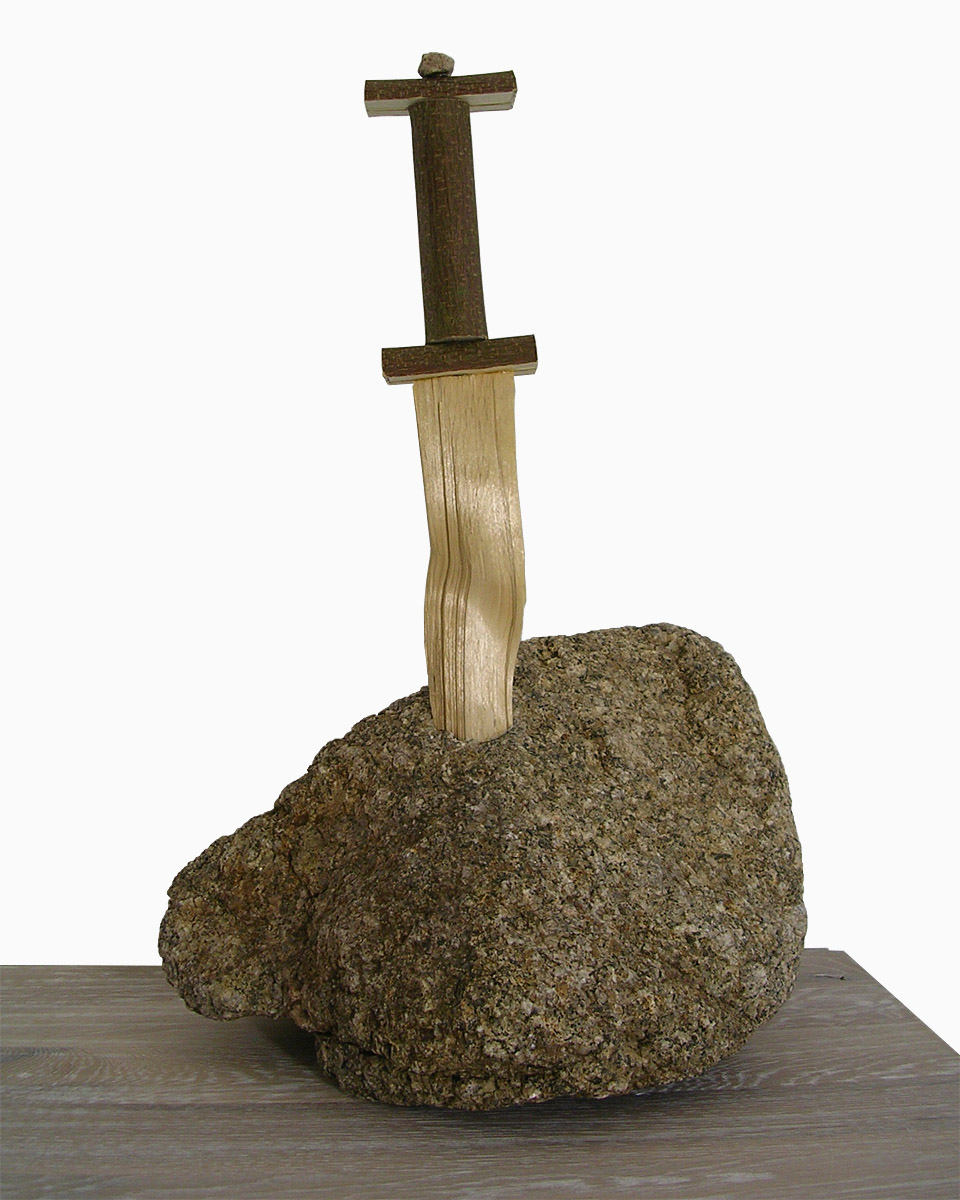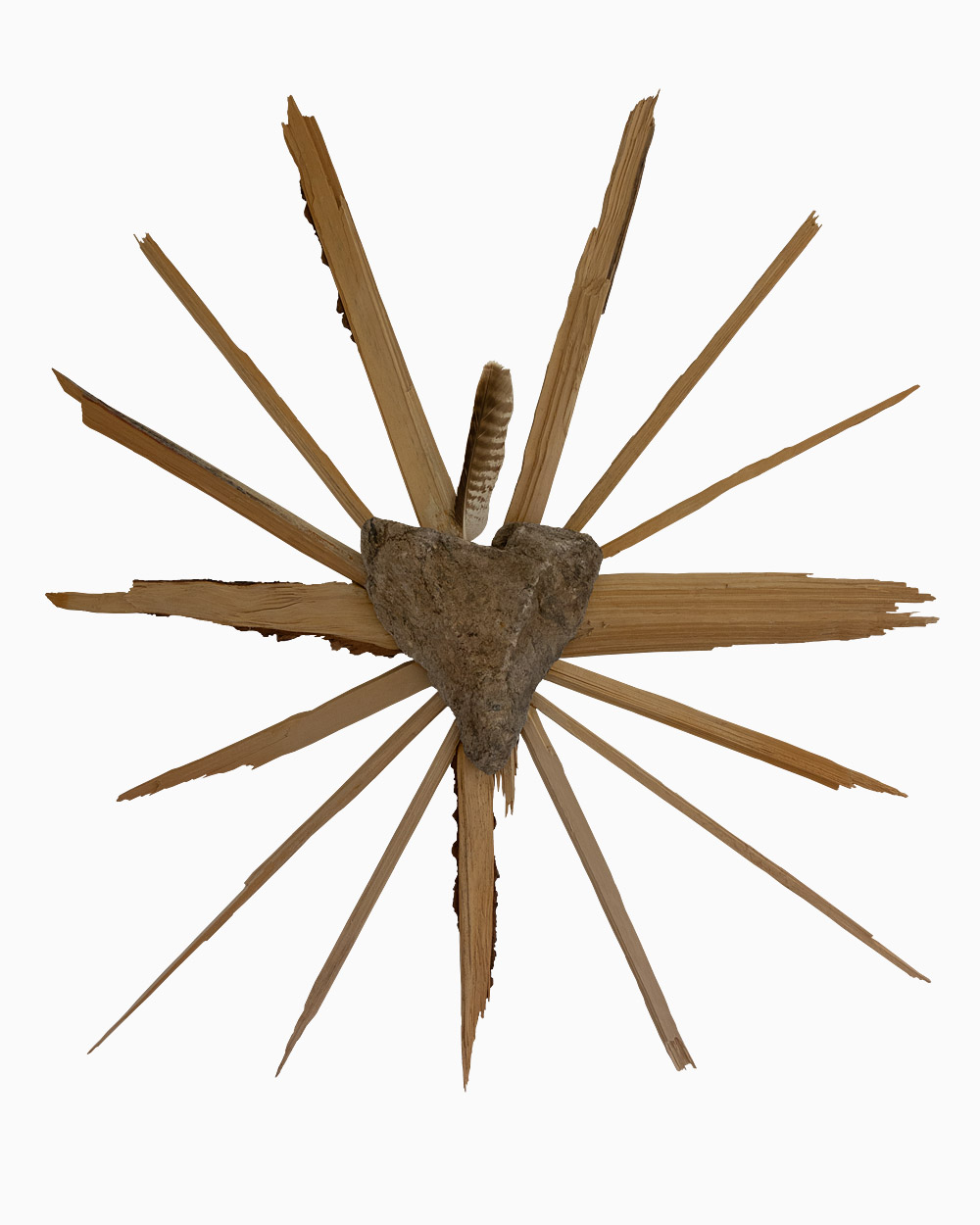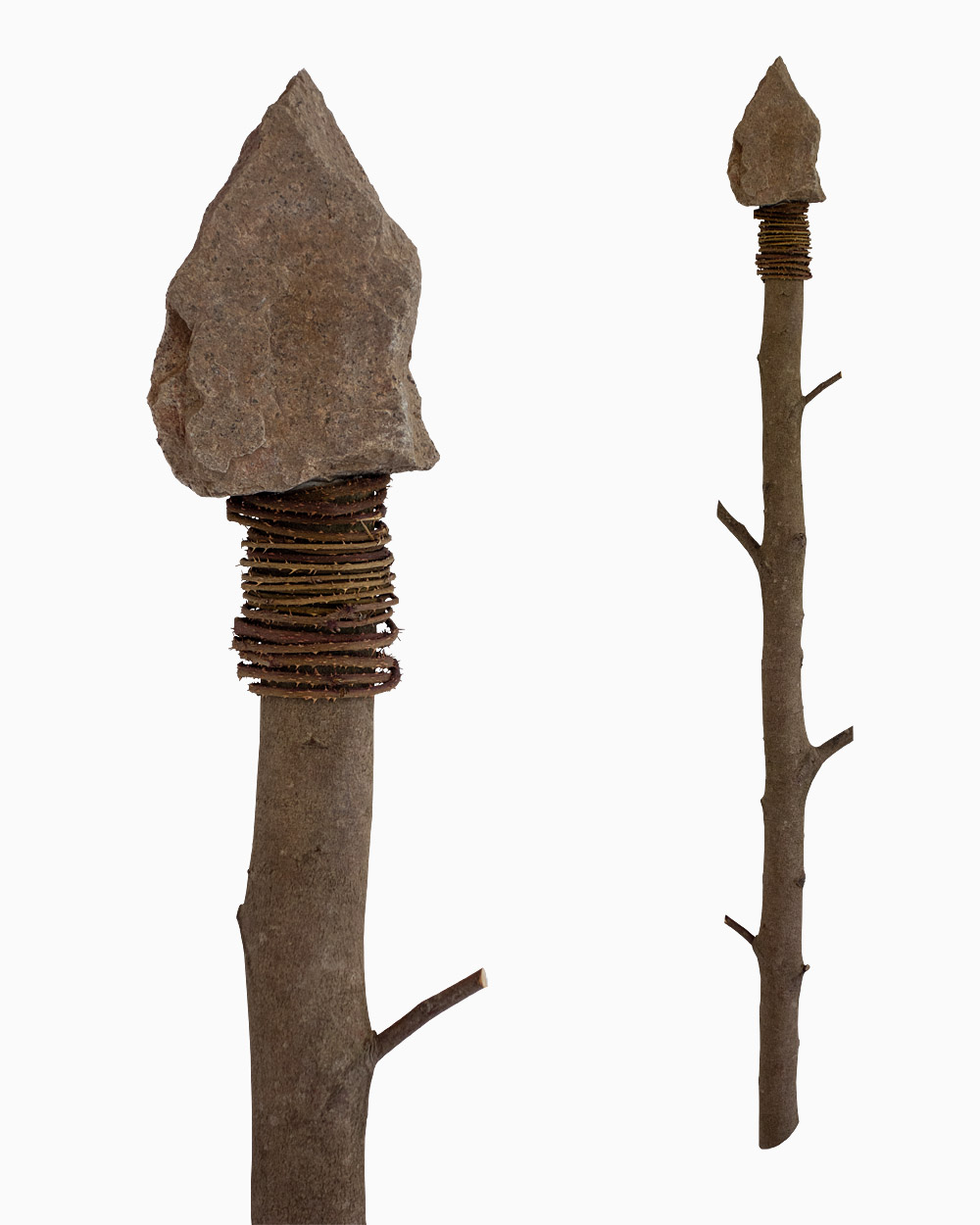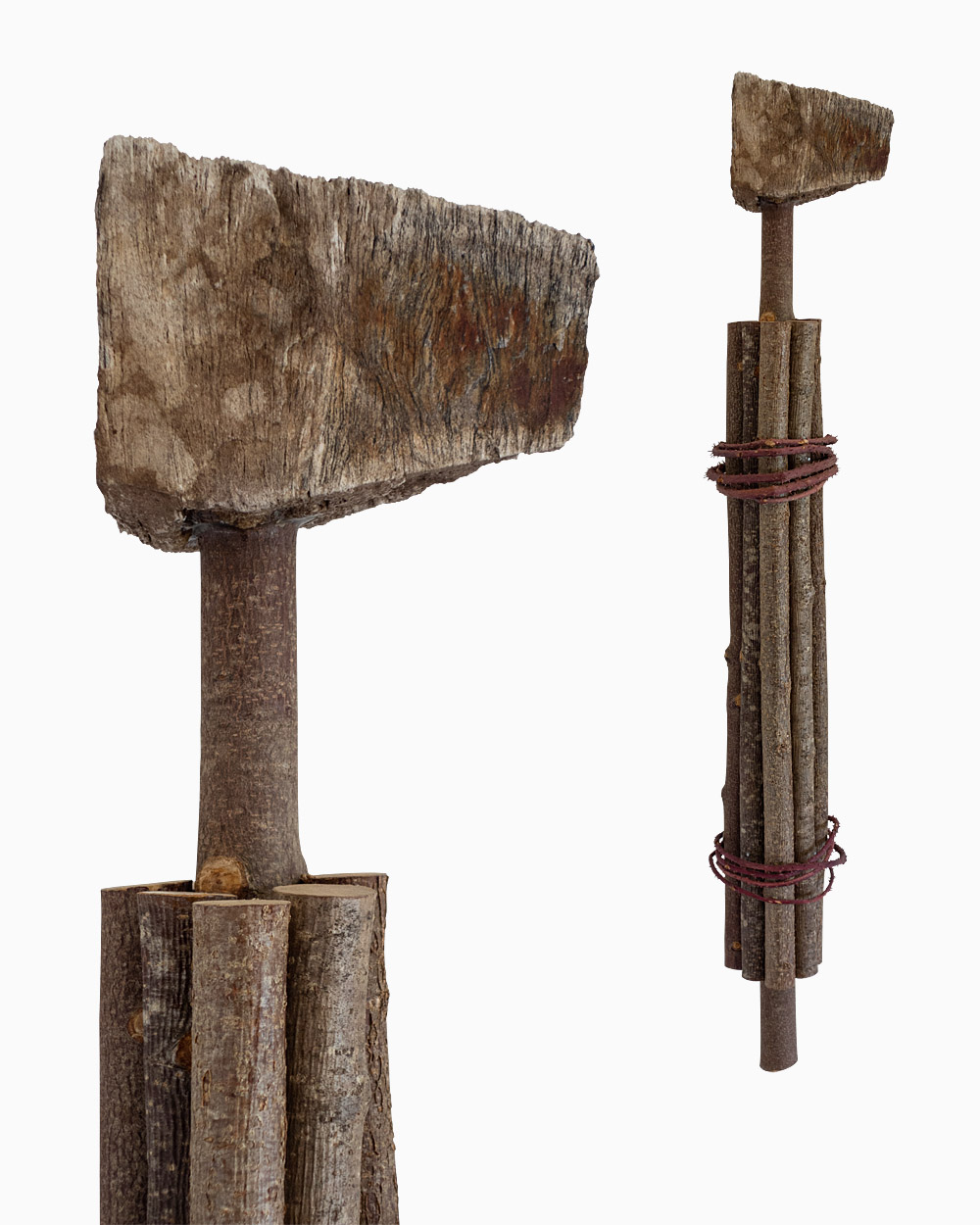Found objects
    |
Exrudis
2017
Flaming heart
2017
Line of flight
2017
Fasces
2017
Thought in a box
2017
|
    |
Exrudis
2017
Flaming heart
2017
Line of flight
2017
Fasces
2017
Thought in a box
2017
|
These found-object sculptures were created by designer/artist Marcel Ritschel in 2017. They incorporate symbols to produce a frame of mind and materials from nature as a means of representation.
The aim of the series was to create physical artefacts at the interface between symbolic realms and natural forces. The choice of materials, mainly wood and stone, implies found objects of found objects, or rather elements, in the sense that a tree encounters earth and water and the fire of the sun, as well as the storm that will break it. This is no art without craft or gestural expression. But more important to the process were chance, analogy, memories and connexions, or new settings and new names.
The representation of symbols insinuates quasi-readymades with the artist as operator of a parametric system. And why not
expect some kind of numbers station, artificial intelligence, or 3d wireframe behind the artifice of power, freedom and love.
Ritschel's found-object sculptures each began with a "seed-crystal" in the Surrealist tradition, not a concept, which attracted
further elements including the symbol. This involved a mingling of psychic and material proxies - that is to say, a mutual
adaptation until what was found became the "object of desire."
(1) The work entitled
Flaming Heart
 represents two states of being, light and dark. It takes its cue from a fairy tale called The Heart of Stone* where
the protagonist has entered a pact to make a stone of his heart in exchange for a hundred thousand guilders. The wood
splinters seen radiating from the heart-shaped stone allude to the sacred heart, symbolizing passion, grace, and cosmic
love, while the feather refers to the Egyptian weighing of the heart. The artist extended the shielding aspect of the work
with a lance entitled
Line of Flight
represents two states of being, light and dark. It takes its cue from a fairy tale called The Heart of Stone* where
the protagonist has entered a pact to make a stone of his heart in exchange for a hundred thousand guilders. The wood
splinters seen radiating from the heart-shaped stone allude to the sacred heart, symbolizing passion, grace, and cosmic
love, while the feather refers to the Egyptian weighing of the heart. The artist extended the shielding aspect of the work
with a lance entitled
Line of Flight
 .
.
* Hauff, W: 1909, Das Kalte Herz, Morang Educational Company Limited.
(2) The
Fasces
 implies "strength through unity" which came to symbolize power and authority in ancient Rome. The axe head of the artist's
fasces consists of a weathered natural stone. The connexion with a bundle of rods was inspired by a spruce forest, thus
visually merging near and far space. Since stone axes are associated with prehistoric times, the work has a certain
anachronistic effect. On a more abstract plane, the centre-periphery structure of the fasces resonates with many
sociocultural forms of expression, for instance the design of eastern temples like the Bayon [Angkor], the motto "All
for one, and one for all," or the image of US soldiers raising a flag on Iwo Jima in World War II.
implies "strength through unity" which came to symbolize power and authority in ancient Rome. The axe head of the artist's
fasces consists of a weathered natural stone. The connexion with a bundle of rods was inspired by a spruce forest, thus
visually merging near and far space. Since stone axes are associated with prehistoric times, the work has a certain
anachronistic effect. On a more abstract plane, the centre-periphery structure of the fasces resonates with many
sociocultural forms of expression, for instance the design of eastern temples like the Bayon [Angkor], the motto "All
for one, and one for all," or the image of US soldiers raising a flag on Iwo Jima in World War II.
(3) The title
Exrudis
 is a compound word made up of Excalibur and Rudis. The rudis was a wooden sword given to Roman gladiators who survived long
enough to gain their freedom. Excalibur was "the sword from the stone" forged on the island of Avalon. On
opposite sides of its blade were inscribed the words "Take me" and "Cast me away," symbolizing power gained and power lost.
is a compound word made up of Excalibur and Rudis. The rudis was a wooden sword given to Roman gladiators who survived long
enough to gain their freedom. Excalibur was "the sword from the stone" forged on the island of Avalon. On
opposite sides of its blade were inscribed the words "Take me" and "Cast me away," symbolizing power gained and power lost.
In Ritschel's found-object sculpture, the twisted blade resembles a strand of hair, perhaps, and the boulder the head of a
bear. The artwork explores the notion of emancipation - or more precisely, a freedom from interference or external
constraints which is different from a freedom to "do as one wills and what one has the power to do" (John Stuart
Mill). In this context, the wooden sword in the stone might be conceived as a torch of liberty marking a boundary between
public authority and personal liberty.